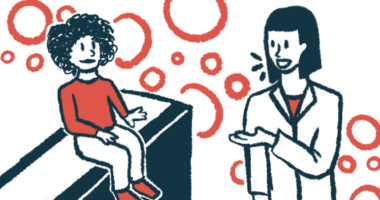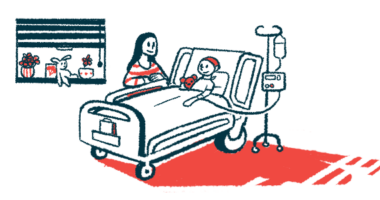Common medical procedures tied to severe anxiety in children, teens
Three out of four children view procedures as highly 'anxiety-inducing'

Children and adolescents with cystic fibrosis (CF) commonly have procedural anxiety — a sudden and excessive fear of a medical procedure leading to acute stress or avoidance — that’s associated with treatment resistance, according to a recent study.
Parents and caregivers reported three out of four children view at least one CF procedure as “extremely anxiety-inducing.”
“These experiences confirm that intervention strategies to mitigate procedural anxiety are necessary for CF clinics as part of routine care, with consistent implementation before the development of procedural anxiety being ideal,” the researchers wrote, adding “a validated CF-specific procedural anxiety measure is needed to allow reliable research into preventive strategies and effective screening practices in clinics.”
The study, “Procedural anxiety among children and adolescents with cystic fibrosis and their parents,” was published in Pediatric Pulmonology.
In people with CF, a defect in the CFTR gene causes thick mucus to build up in the lungs, pancreas, and other organs, impairing their function.
Patients, especially children and teens, often need invasive and painful procedures that cause fear and worry, causing distress and procedural anxiety. This may intensify the treatment burden and result in adverse health outcomes due to resistance and avoidance behaviors.
Procedural anxiety in children and adolescents with CF is poorly understood, leading researchers at the University of Queensland, Australia to investigate its prevalence and the factors that correlate with procedural anxiety among patients by inviting the parents and primary caregivers of patients in Australia, ages 6 to 18, to complete an online survey. The survey was publicized by Cystic Fibrosis Australia from October 2019 to February 2020.
Evaluating procedural anxiety in children with CF
In total, 89 parents — 68 of children ages 6 to 12, and 21 of adolescents ages 13 to 18 — completed the survey.
Child procedural anxiety was evaluated using the two subscales of the Pediatric Quality of Life Inventory (PEDS-QL)-Parent Version — the Procedural Anxiety Module (Pa-PEDS-QL), which focuses on needle anxiety, and the Treatment Anxiety Module (Ta-PEDS-QL).
A scale was also developed specifically for this study — the CF Procedure Anxiety Scale (CF-PAS) — since there was no CF-specific scale to assess procedural anxiety. CF-PAS assesses anxiety during seven common CF medical procedures, such as blood tests, cough swab, lung function testing, and general anesthesia, and was evaluated by a team of pediatric clinical psychologists and a CF expert.
Child anxiety was analyzed using the Spence Childhood Anxiety Scale-Parent Version, whereas treatment-resistive behaviors specific to CF were assessed with the Cystic Fibrosis Problems Checklist (CFPC). Treatment adherence was measured using the Treatment Adherence Rating Scale (TARS)-parent report.
Parents reported significantly higher levels of procedural anxiety in children compared to parents of adolescents, as shown by higher mean scores in the Pa-PEDS-QL (2.3 vs. 1.4).
Parents rated procedural anxiety as higher than treatment anxiety (mean 2.1 vs. 1.1). Both procedure and treatment anxiety scores were significantly higher in children with clinically significant anxiety scores, compared to children whose scores were below that threshold.
Also, children who’d never had a distressing medical procedure had significantly lower levels of procedural anxiety than those with two or more of such episodes (mean score of 2.3 vs. 1). No association between general anesthesia and procedural anxiety was found.
In general, CF-PAS scores were highly correlated to those of PEDS-QL. In CF-PAS, 75.3% of parents rated at least one CF procedure as “extremely anxiety-inducing” for their child. Those inducing anxiety the most were intravenous (into-the-vein) line insertions (58.4%), injections and blood tests (47.7%), bronchoscopy (43.9%), and administering general anesthesia (43.2%). In bronchoscopy, a thin, flexible tube is inserted through the nose or mouth to look inside the lungs.
In contrast, few parents considered lung function testing (2.2%) chest imaging (3.5%), and throat swabs (12.5%) as causing extreme anxiety. Parents also said skin prick tests, changing and removing dressing, and percutaneous gastrostomy changing were also anxiety-inducing. Percutaneous gastrostomy is used to improve the nutritional status of CF patients, which is commonly defective. The procedure uses a flexible feeding tube placed through the abdominal wall into the stomach.
Similar to the PEDS-QL results, children with clinically significant anxiety scored higher on CF-PAS than children without anxiety (mean, 12.2 vs. 9). Children with more than two distressing episodes before had higher scores than those with no previous distressing experiences (mean, 11.5 vs. 4.8).
Procedural anxiety’s ties to treatment anxiety, parents
The children’s anxiety was mirrored by the parents, as 80.9% reported moderate or extreme indirect procedural anxiety for at least one procedure. Parents’ anxiety wasn’t influenced by their children’s previous distressing experiences or by having clinically significant anxiety.
In a final analysis, the researchers found higher procedural anxiety, measured with PEDS-QL, correlated with worse CF-PAS scores and more treatment anxiety and child anxiety. Likewise, higher CF-PAS scores and child anxiety correlated moderately with worse indirect procedural anxiety by parents.
Also, more treatment anxiety scores correlated with higher (worse) CF-PAS scores, parents’ procedural anxiety and treatment-resistive behaviors, and with less treatment adherence.
These findings show “procedural anxiety is common in children and adolescents with CF and their caregivers,” the researchers wrote. “Implementation of screening and intervention practices to promote adaptive coping mechanisms from early childhood and across the full range of CF procedures and healthcare settings is warranted.”








